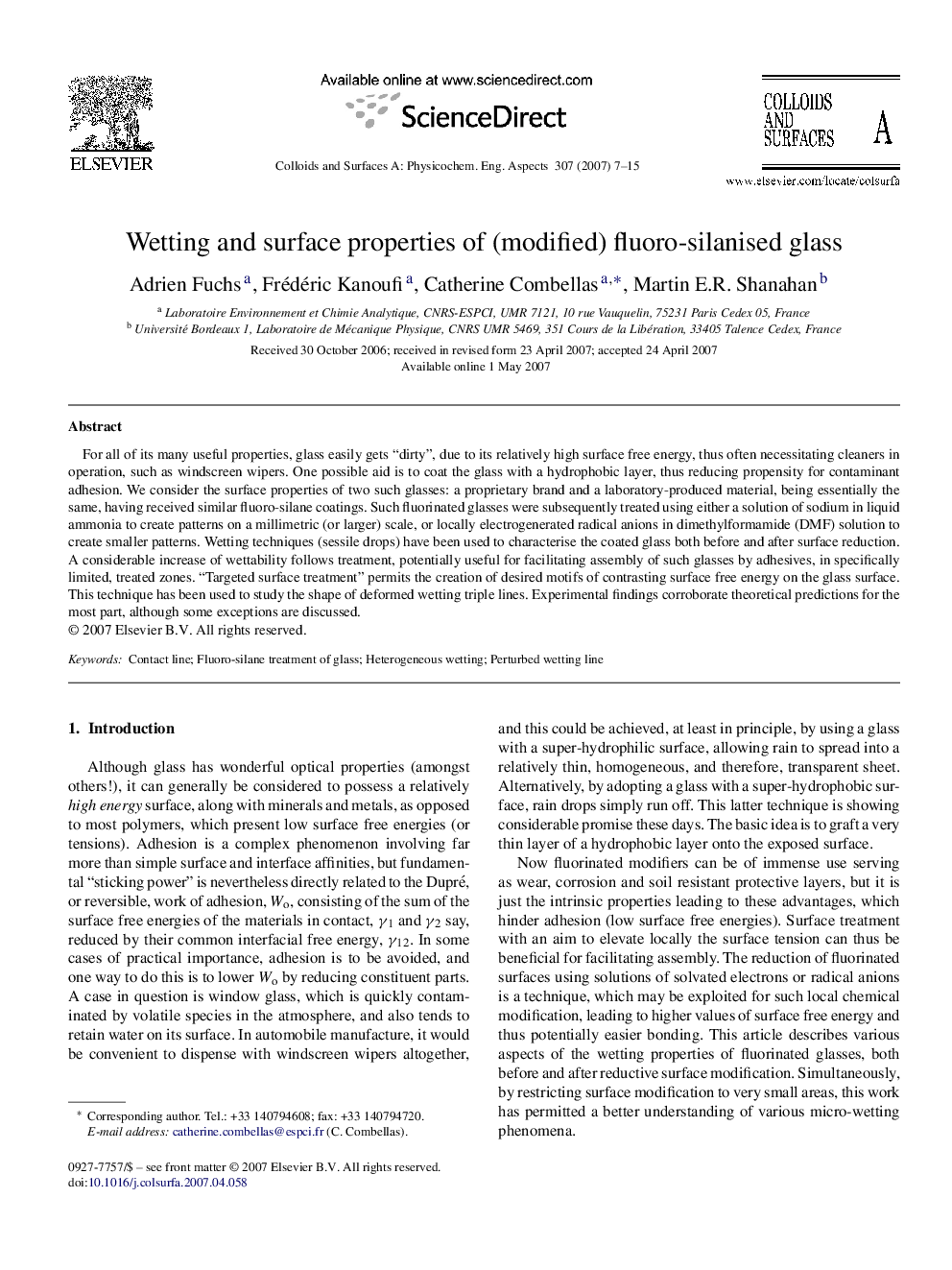| Article ID | Journal | Published Year | Pages | File Type |
|---|---|---|---|---|
| 597222 | Colloids and Surfaces A: Physicochemical and Engineering Aspects | 2007 | 9 Pages |
For all of its many useful properties, glass easily gets “dirty”, due to its relatively high surface free energy, thus often necessitating cleaners in operation, such as windscreen wipers. One possible aid is to coat the glass with a hydrophobic layer, thus reducing propensity for contaminant adhesion. We consider the surface properties of two such glasses: a proprietary brand and a laboratory-produced material, being essentially the same, having received similar fluoro-silane coatings. Such fluorinated glasses were subsequently treated using either a solution of sodium in liquid ammonia to create patterns on a millimetric (or larger) scale, or locally electrogenerated radical anions in dimethylformamide (DMF) solution to create smaller patterns. Wetting techniques (sessile drops) have been used to characterise the coated glass both before and after surface reduction. A considerable increase of wettability follows treatment, potentially useful for facilitating assembly of such glasses by adhesives, in specifically limited, treated zones. “Targeted surface treatment” permits the creation of desired motifs of contrasting surface free energy on the glass surface. This technique has been used to study the shape of deformed wetting triple lines. Experimental findings corroborate theoretical predictions for the most part, although some exceptions are discussed.
